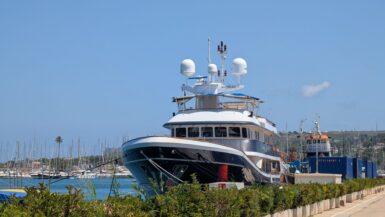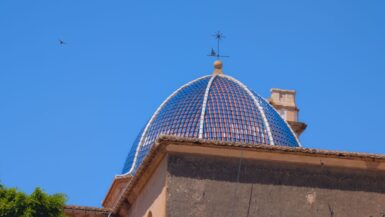Looking for an unforgettable summer experience on the Costa Blanca? The San Juan festival is one of Spain’s most magical celebrations, and I’ve put together this guide to help you experience this incredible night of fire, music, and ancient traditions.

Every year on the night of June 23rd, the Costa Blanca transforms into something truly special. From Alicante to Denia, beaches come alive with towering bonfires, families gathering for midnight feasts, and the ancient tradition of jumping over flames for good luck. Whether you’re staying in Benidorm, Calpe, or any other coastal town, this guide will help you make the most of this enchanting celebration.
What is the San Juan festival?
San Juan (Saint John) is celebrated across Spain on June 23rd-24th, marking the summer solstice and the shortest night of the year. On the Costa Blanca, this ancient celebration combines Christian traditions with pre-Roman fire rituals that have been passed down through generations.

The festival centres around three main elements: bonfires (hogueras), jumping over fire for good luck, and spending the night on the beach with family and friends. It’s a time when entire communities come together to celebrate the arrival of summer with music, food, and the mesmerising glow of flames dancing against the Mediterranean backdrop.
What makes San Juan particularly special on the Costa Blanca is how each town puts its own spin on the celebration while maintaining the core traditions that make this night so magical.
Origins and history of San Juan
The San Juan festival has incredibly ancient roots that stretch back thousands of years. Long before Christianity arrived in Spain, Celtic and pre-Roman tribes celebrated the summer solstice with fire ceremonies to honour the sun and ensure good harvests.
When Christianity spread across the Iberian Peninsula, the Church cleverly adapted these pagan celebrations to honour Saint John the Baptist, whose feast day falls on June 24th. The fire rituals remained but took on new meaning – flames now represented purification and the light of Saint John.

The tradition of jumping over fire comes from the belief that flames have purifying powers. People would leap over bonfires to cleanse themselves of bad luck, illness, and negative energy from the past year. Young couples would jump together to ensure fertility and a happy marriage, while children would make wishes as they sailed over the flames.
On the Costa Blanca, maritime communities added their own customs. Fishermen would burn old fishing nets and boats that were beyond repair, while making offerings to ensure safe voyages and abundant catches in the coming year.
San Juan traditions and customs
The bonfire ritual
The heart of San Juan celebrations revolves around building and lighting massive bonfires on beaches and in town squares. Families and neighbourhoods spend weeks collecting old furniture, wood, and anything else that will burn well.
The bonfires aren’t just random piles of wood – there’s real art involved. Many communities create elaborate sculptures or effigies representing local politicians, celebrities, or social issues they want to “burn away” for the new year.
At exactly midnight, all the bonfires are lit simultaneously. The moment when hundreds of flames burst to life along the coastline is absolutely breathtaking – you can see the glow for miles along the Mediterranean.
Fire jumping for good luck
This is the tradition that makes San Juan truly special. As the bonfires burn down to manageable levels, people take turns jumping over the flames while making wishes for the year ahead.
The key is timing your jump when the flames are high enough to be meaningful but not so high that you’ll get singed! Most people jump three times – once for health, once for love, and once for money. Children often need a bit of encouragement (and careful supervision), but it’s considered essential for good luck.
I’ve jumped over San Juan fires many times, and there’s something genuinely magical about sailing over those flames with the Mediterranean breeze on your face and the sound of celebration all around you.
Beach picnics and midnight feasts
San Juan isn’t just about fire – it’s also a massive outdoor feast. Families arrive at the beaches in the late afternoon with elaborate picnics that would put most restaurant meals to shame.
Traditional foods include paella cooked over wood fires, grilled sardines, coca (a flatbread topped with vegetables or tuna), and plenty of sangria and beer.
Many families set up dining areas with tables, chairs, and even portable gazebos.
Best places to celebrate San Juan on the Costa Blanca
Alicante
Alicante hosts one of the most spectacular San Juan celebrations on the Costa Blanca. The main action happens on Postiguet Beach, right near the city centre, where enormous bonfires and fireworks light up the night.
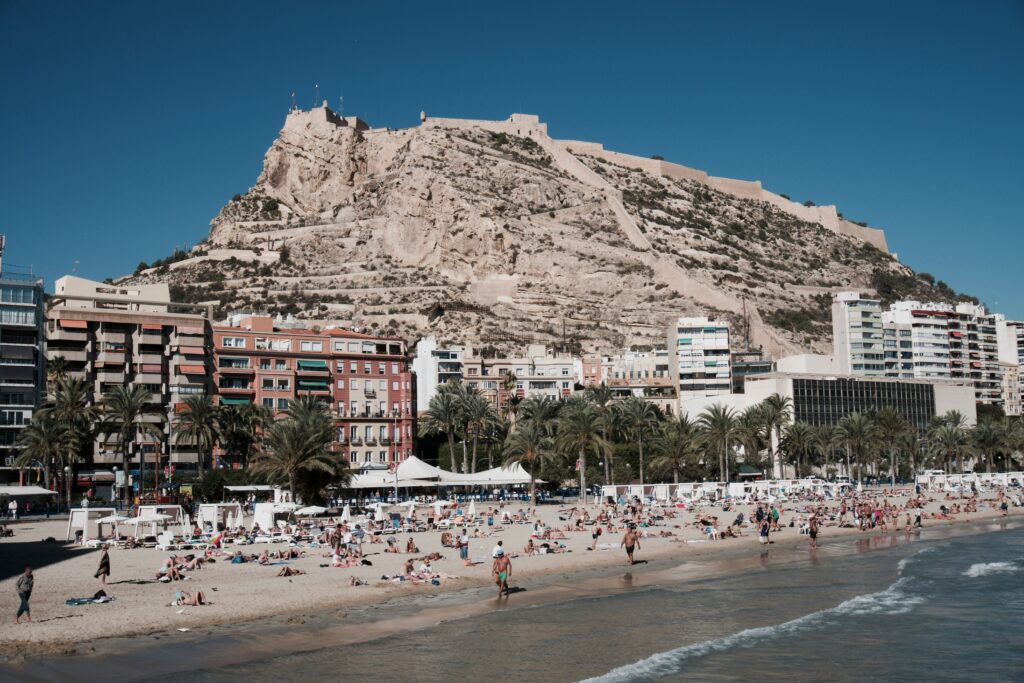
The city organises official bonfires with professional sculptors creating incredible artistic installations that are burned at midnight. You’ll find live music stages, food stalls, and a carnival atmosphere that continues until dawn.
Postiguet Beach also hosts a fireworks competition throughout the event that marks the culmination of the festival.
Benidorm
Benidorm’s San Juan celebration combines the traditional bonfire ritual with the town’s famous party atmosphere. The main bonfires are built on Levante and Poniente beaches, creating an incredible spectacle against the backdrop of the hotel skyline.

What makes Benidorm special is the international crowd – you’ll hear celebrations in dozens of languages as tourists and expats join locals in the fire-jumping tradition. The bars and restaurants stay open all night, making it easy to keep the party going.
- Key details:
- Main locations: Levante Beach and Poniente Beach
- Atmosphere: International party vibe with traditional elements
- Duration: All night celebration with bars open until dawn
- Tip: Arrive early to secure a good spot near the bonfires
Denia
Denia offers a more authentic, family-friendly San Juan experience. The celebration centres around Les Marines beach, where local families build traditional bonfires and cook elaborate meals over wood fires.
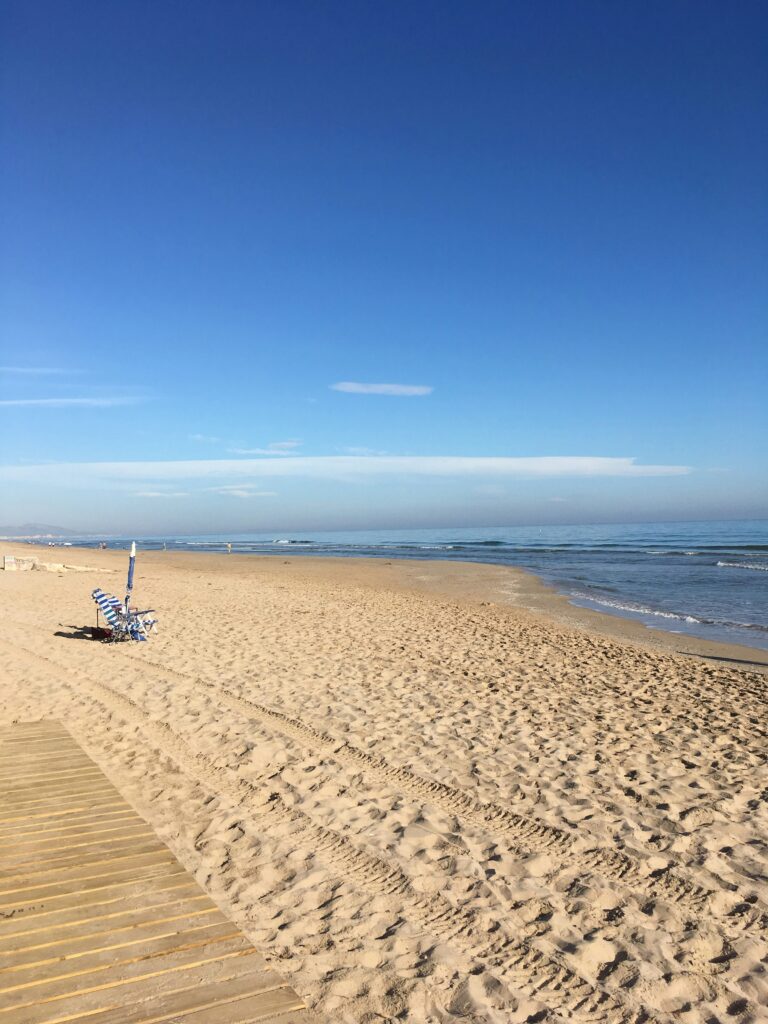
The atmosphere here is more intimate than in larger cities, making it perfect if you want to experience San Juan as locals do. You’ll often be invited to share food and drinks with Spanish families who are delighted to explain the traditions to visitors.
- Key details:
- Main location: Les Marines beach
- Atmosphere: Traditional, family-oriented celebration
- Special feature: Very welcoming to visitors wanting to learn about traditions
- Food: Excellent opportunity to try authentic San Juan dishes
Calpe
Calpe’s San Juan celebration takes place on the main beaches with the dramatic Peñón de Ifach rock formation providing a stunning backdrop. The combination of ancient fire traditions and the iconic limestone rock creates some of the most photogenic San Juan scenes on the Costa Blanca.
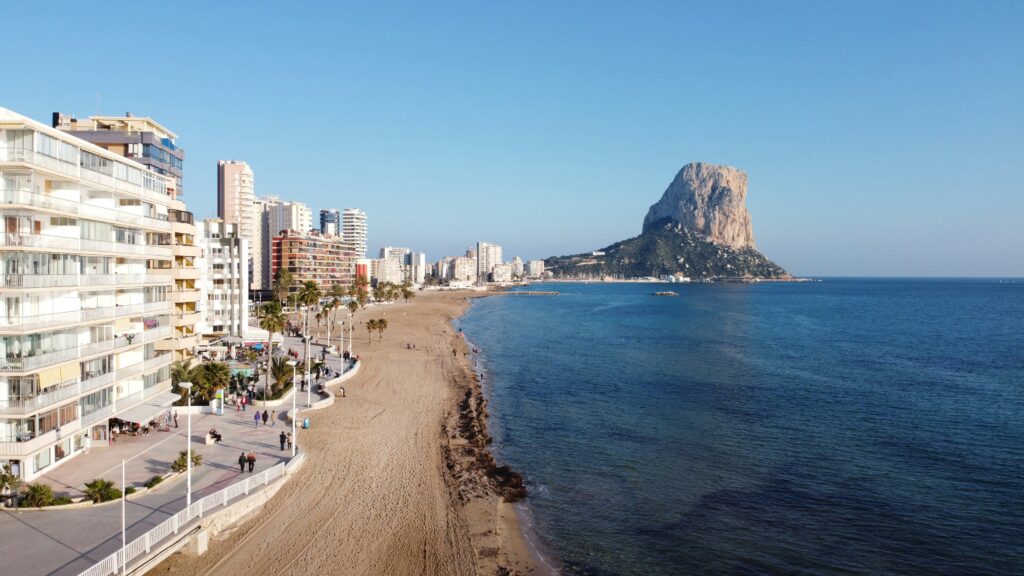
The town organises both official bonfires and allows families to build their own smaller fires. There’s usually live music and dancing that continues well into the early hours.
- Key details:
- Main location: Arenal-Bol beach and Cantal Roig beach
- Special feature: Incredible photos with Peñón de Ifach backdrop
- Music: Live performances and traditional dancing
- Duration: Celebration continues until sunrise
Javea
Javea’s San Juan is celebrated on the Arenal beach, creating a more relaxed and intimate atmosphere compared to the larger resort towns. The celebration maintains strong traditional elements, with local families taking the lead in organising bonfires and communal meals.

The curved bay provides natural protection from wind, making it ideal for keeping bonfires burning steadily throughout the night. You’ll find excellent local restaurants nearby if you don’t want to bring your own picnic.
- Key details:
- Main location: Arenal beach
- Atmosphere: Relaxed, traditional celebration
- Advantages: Sheltered bay, nearby restaurants
- Crowd: Mix of locals and visitors in intimate setting
What to expect during San Juan night
Timeline of events
San Juan celebrations follow a fairly predictable schedule that’s been refined over centuries:
- 6:00 PM onwards: Families begin arriving at beaches with picnic supplies and bonfire materials. The atmosphere is relaxed as people set up their spots and start preparing food.
- 8:00 PM – 11:00 PM: Serious cooking begins. You’ll see paella pans appearing over wood fires, sardines being grilled, and the first bottles of wine being opened. This is when the beaches really come alive.
- 11:30 PM: Excitement builds as midnight approaches. Final preparations are made to the bonfires, and everyone gathers around their chosen fire.
- Midnight: The magic moment when all bonfires are lit simultaneously. The entire coastline erupts in flames and cheering.
- 12:30 AM – 2:00 AM: Prime time for fire jumping. The flames have died down enough to be safe but are still impressive enough for the ritual to feel meaningful.
- 2:00 AM onwards: The party continues with music, dancing, and more eating. Many celebrations continue until sunrise.
The atmosphere and energy
There’s something genuinely magical about San Juan night that’s hard to describe until you experience it yourself. The combination of ancient traditions, community celebration, and the Mediterranean setting creates an atmosphere unlike any other festival.
The energy builds throughout the evening, reaching a crescendo at midnight when the bonfires are lit. You’ll hear cheering, singing, and the crackle of flames mixing with the sound of waves lapping the shore. What strikes most visitors is how welcoming Spanish families are during San Juan. It’s common to be invited to share food, drinks, and stories with people you’ve never met before. The festival brings out the best in Spanish hospitality.
Essential San Juan survival guide
What to wear
Choosing the right outfit for San Juan is crucial for both comfort and safety:
- Footwear: Closed-toe shoes are essential – flip-flops or sandals won’t protect your feet from hot sand, sparks, or broken glass. Trainers or boots are ideal.
- Clothing: Natural fibres like cotton are safer around fires than synthetic materials. Long trousers offer better protection than shorts when jumping over flames.
- Layers: Beach temperatures can drop after midnight, so bring a light jacket or jumper.
- Avoid: Loose, flowing clothes that could catch fire easily. Keep jewellery minimal.
What to bring
- Safety items:
- First aid kit with burn gel
- Plenty of water for drinking and emergency fire extinguishing
- Torch or phone light for navigating dark beaches
- Comfort essentials:
- Beach chairs or blankets for long waits
- Cooler with ice for drinks and food
- Portable phone charger – you’ll want to take lots of photos!
- Food and drink:
- Traditional San Juan foods if you want to join in properly
- Plenty of water to stay hydrated
- Wine or beer to toast at midnight
Safety considerations
While San Juan is generally safe, the combination of fire, alcohol, and crowds requires some common sense:
- Fire safety: Never jump over flames that are higher than your knees. Wait for bonfires to burn down to safe levels.
- Crowd awareness: Popular beaches can get extremely crowded. Keep an eye on children and agree on meeting points if you get separated.
- Alcohol moderation: It’s a long night, and you’ll want to remember the experience! Pace yourself with drinking.
- Beach hazards: Watch out for broken glass, hot sand near fires, and holes dug for bonfire foundations.
Planning your San Juan experience
Best arrival times
For the most authentic experience, I recommend arriving at your chosen beach around 7:00 PM. This gives you time to find a good spot, watch the preparations, and soak up the building atmosphere. If you’re mainly interested in the bonfire lighting and fire jumping, arriving by 11:00 PM is fine, but you’ll miss the community aspect that makes San Juan special.
Booking accommodation
Hotels in popular San Juan destinations like Alicante and Benidorm fill up quickly for June 23rd-24th. Book at least 2-3 months in advance if you’re planning to stay overnight. Many people choose to stay awake all night and sleep the next day, so consider booking accommodation for June 24th-25th rather than 23rd-24th if you want to rest after the celebration.
Transportation considerations
Public transport often runs special late-night services during San Juan, but it can be crowded and unpredictable. If you’re driving, be aware that parking near popular beaches becomes extremely difficult after 8:00 PM. Many people walk to San Juan celebrations and arrange taxis home in the early hours. Pre-booking a taxi for 3:00 AM or 4:00 AM is wise if you don’t want to walk long distances after a night of celebration.
San Juan beyond the Costa Blanca
While this guide focuses on Costa Blanca celebrations, San Juan is celebrated throughout Spain with regional variations:
- Galicia: Features massive bonfires in city squares and the tradition of eating queimada (flaming punch).
- Catalonia: Known for spectacular bonfires in Barcelona and beach celebrations along the Costa Brava.
- Andalusia: Combines San Juan with flamenco performances and elaborate feast preparations.
The Costa Blanca version is special because of the combination of beautiful beaches, perfect weather, and strong local traditions that have been maintained despite tourism development.
Making the most of your San Juan experience
The key to enjoying San Juan is embracing the Spanish approach to celebration – arrive with an open mind, be prepared to stay up all night, and don’t be afraid to join in with local families.
Start your evening with a proper Spanish meal around 9:00 PM, join in the midnight bonfire lighting, make your wishes as you jump over the flames, and then settle in for a night of music, conversation, and celebration that continues until the sun rises over the Mediterranean. Just remember to pack comfortable shoes, bring plenty of water, and prepare for one of the most magical nights you’ll experience on the Costa Blanca. The combination of ancient fire traditions and Spanish hospitality creates memories that last a lifetime!


